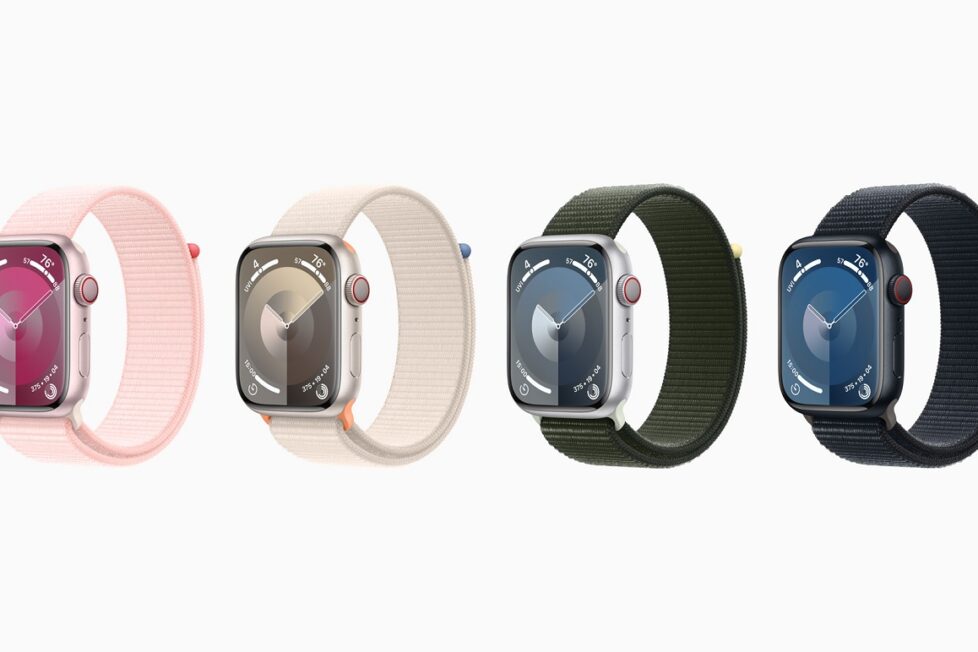Apple Launches its First Carbon Neutral Products

Apple announced the launch of its new Apple Watch lineup, incorporating a series of sustainability features in the product line, and touting the new products as the company’s first to achieve carbon neutrality.
According to the company, the achievement marks a major step towards its goal to reach carbon neutrality across its full product lineup, including in the supply chain and product use, by the end of the decade. The target forms part of Apple’s ambition to become carbon neutral across its entire business, manufacturing supply chain, and product life cycle by 2030, a goal set by the company in 2020.
Lisa Jackson, Vice President of Environment, Policy, and SocialSocial criteria examine how it manages relationships with employees, suppliers, customers, and the communities where it operates. More Initiatives at Apple, said:
“We’ve achieved an important milestone in making the world’s most popular watch carbon neutral — and we will keep innovating to meet the urgency of the moment.”
Apple outlined the criteria its uses to ensure carbon neutrality for each watch, including using 100% clean electricity for manufacturing and product use, 30% recycled or renewable material by weight, and 50% of shipping without the use of non-air modes of transportation, such as ocean shipping.
The company added that it will match 100% of customers expected electricity use for charging with renewable energy. Product use accounts for over 20% of Apple’s carbon footprint.
Overall, the company said that its design innovations and clean energy use have reduced product emissions for each Apple Watch model by at least 75%, with high-quality carbon credits used to address the remaining emissions footprint. Apple uses carbon credits from projects certified by international standards, mostly from nature-based projects that remove carbon from the atmosphere, like restoring grasslands, wetlands, and forests.
Apple’s efforts to decarbonize its products focus on electricity, materials, and transportation, which are the three primary sources of emissions across the product life cycle.
Emissions from the manufacturing supply chain represent more than 70% of Apple’s carbon footprint, with electricity use as the single largest contributor. Apple established a Supplier Clean Energy Program in 2015, offering suppliers resources including information about renewable energy procurement options, training materials, country-specific information, data insights, and engagement opportunities with renewable energy experts as well as policy advocacy. The company recently revealed that more than 250 suppliers across 28 countries, representing over 85% of the company’s direct manufacturing spend, have now committed to using renewable energy for all Apple production by 2030, and that the use of renewable electricity by its manufacturing partners increased by nearly 30% in 2022.
The company has aims to make its products using only recycled or renewable materials, and it has announced that it has ended the use of leather across all of its product lines. Apple announced its first entirely fiber-based packaging for the new Apple Watch, as well as 99% fiber-based packaging for the iPhone 15.
To address transport emissions, Apple said that it is shifting more volume to shipping modes such as rail or ocean, supporting the development of sustainable aviation fuels, and selecting vendors that offer low-carbon options for transport.
Apple also the launch of Grid Forecast, a new tool in the Home app enabling users to decide when to use electricity for energy-intensive appliances based on timing when the electricity grid is using cleaner energy sources, utilizing data that combines grid, emissions, and weather information.
Jackson said:
“At Apple, we have a longstanding and proven commitment to leading the fight against climate change. Our focus on renewable energy and low-carbon design has already driven industry-leading emissions reductions, and we’re not slowing down.”